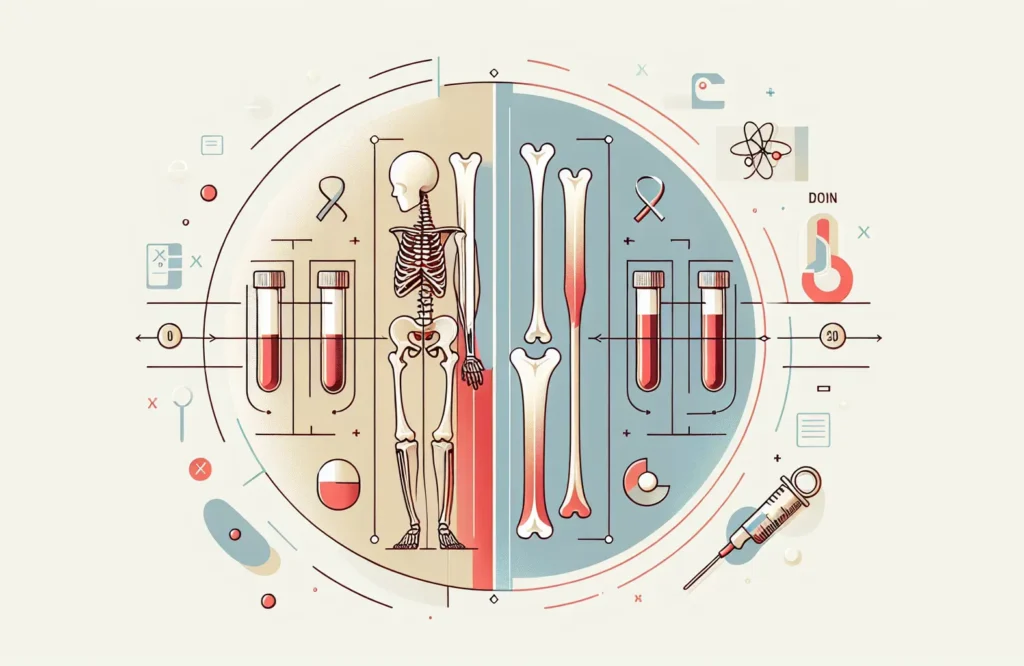
By CAFMI AI From Nature Reviews Nephrology
X-linked hypophosphatemia (XLH) is a genetic disorder resulting in low phosphate levels, significantly impacting bone health and development. Identifying XLH accurately requires a combination of clinical evaluation and genetic testing. Clinicians should be aware of hallmark features like hypophosphatemia that is resistant to conventional phosphate supplementation, alongside signs such as bone deformities, dental abscesses, and growth retardation. Diagnostic criteria recommend confirming hypophosphatemia through laboratory tests assessing serum phosphate alongside elevated renal phosphate wasting indicators like increased fractional excretion of phosphate. Genetic testing for mutations in the PHEX gene solidifies the diagnosis and allows differentiation from other causes of hypophosphatemia such as tumor-induced osteomalacia or other hereditary hypophosphatemic disorders. Early and accurate diagnosis is vital for initiating appropriate therapy and providing genetic counseling for families.
Management of XLH involves a multidisciplinary approach centered around correction of phosphate imbalance and promoting bone mineralization. Traditional treatment has relied on oral phosphate supplementation combined with active vitamin D analogues (such as calcitriol) to enhance intestinal phosphate absorption and mitigate secondary hyperparathyroidism. This conventional regimen requires close monitoring to avoid adverse effects including nephrocalcinosis and hyperparathyroidism, necessitating dose adjustments based on serum and urinary biomarkers. Recently, newer targeted therapies, particularly burosumab, a monoclonal antibody against fibroblast growth factor 23 (FGF23), have changed the treatment landscape. Burosumab directly addresses the underlying pathophysiology by reducing FGF23 activity, leading to improved phosphate reabsorption and bone health while reducing the risks associated with high-dose phosphate and vitamin D therapy. Clinical trials have demonstrated significant improvements in biochemical parameters, radiographic healing of rickets, growth, and quality of life with burosumab use. These advances highlight the importance of updating treatment protocols and integrating these innovative therapies into clinical practice for optimized patient outcomes.
For U.S.-based clinicians managing XLH patients, understanding the clinical implications and workflow integration is crucial. Considering the chronic nature of XLH, ongoing assessment involves multidisciplinary collaboration including endocrinologists, nephrologists, orthopedic surgeons, and dentists. Primary care providers play a key role in early recognition, referral for genetic testing, and initiation of supportive care. Counseling points include educating patients and families about the genetic nature of the disorder, inheritance patterns, anticipated clinical course, and potential complications like skeletal deformities and dental issues. Regular follow-up with biochemical monitoring is essential to tailor treatment and prevent complications. Identifying red flags such as severe skeletal deformities or growth failure should prompt expedited referral. Importantly, integrating updated clinical practice guidelines into primary-care workflows can streamline management, ensuring timely diagnosis and optimized treatment initiation. In addition, primary care teams should remain vigilant for comorbidities and address quality of life concerns, promoting holistic care for these patients.
Read The Original Publication Here